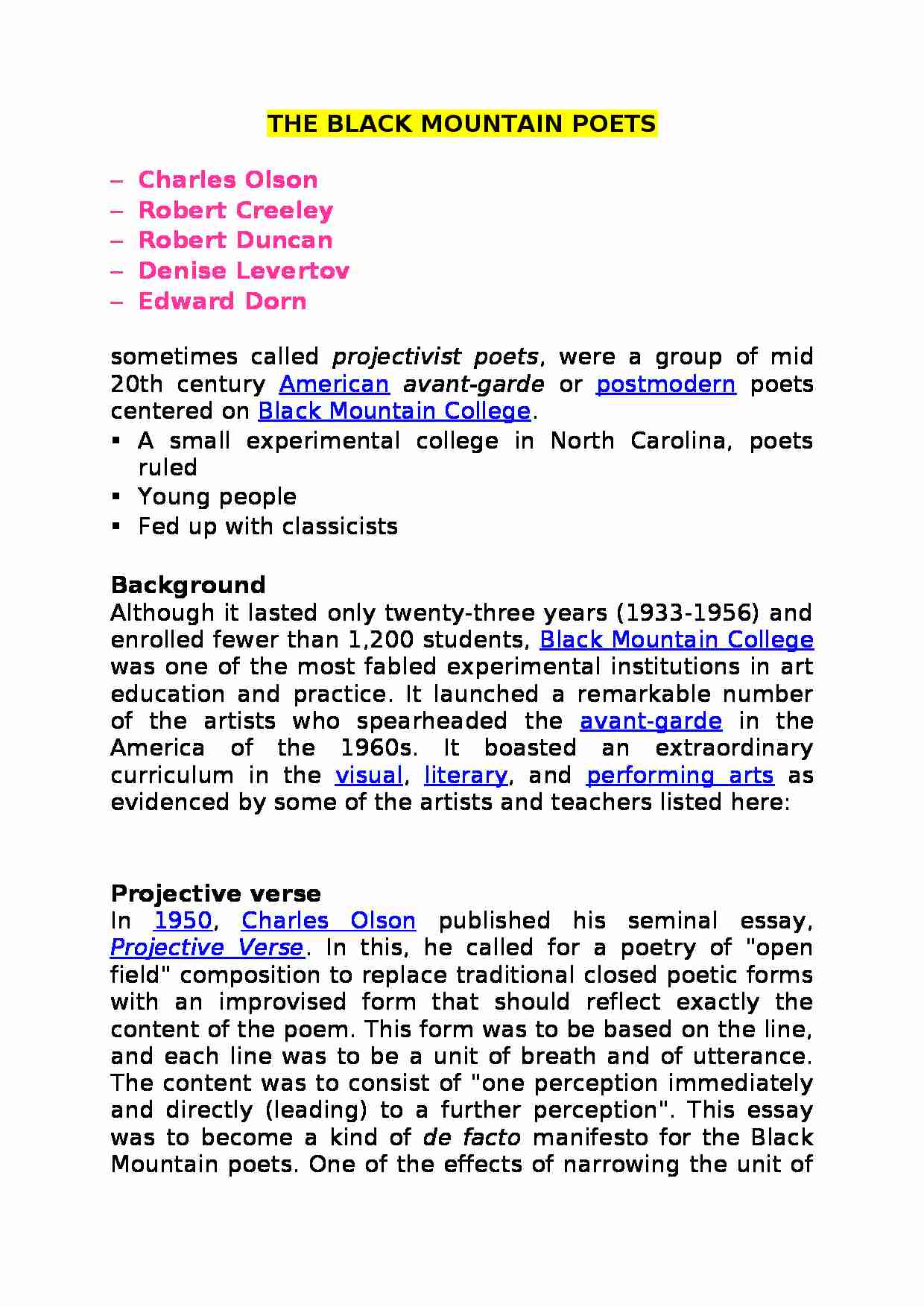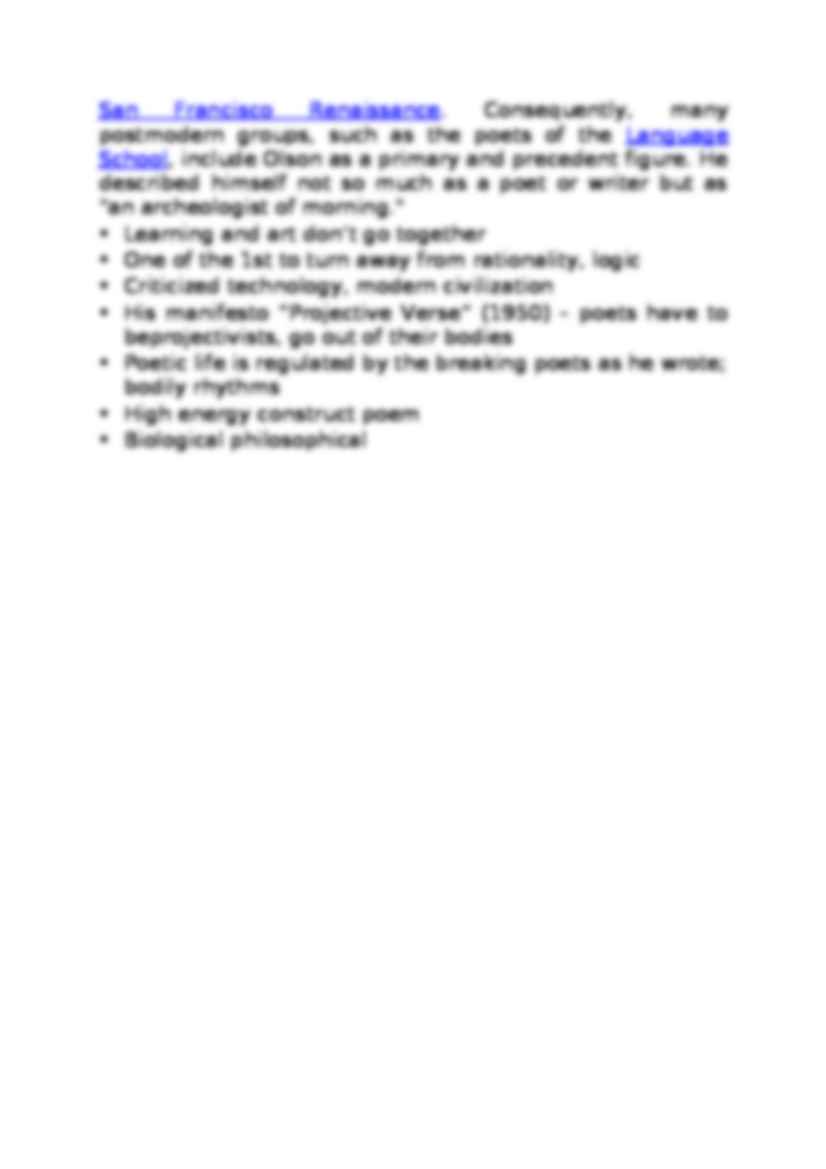To tylko jedna z 3 stron tej notatki. Zaloguj się aby zobaczyć ten dokument.
Zobacz
całą notatkę



The Black Mountain poets
Charles Olson
Robert Creeley
Robert Duncan
Denise Levertov
Edward Dorn
sometimes called projectivist poets, were a group of mid 20th century American avant-garde or postmodern poets centered on Black Mountain College.
A small experimental college in North Carolina, poets ruled
Young people
Fed up with classicists
Background
Although it lasted only twenty-three years (1933-1956) and enrolled fewer than 1,200 students, Black Mountain College was one of the most fabled experimental institutions in art education and practice. It launched a remarkable number of the artists who spearheaded the avant-garde in the America of the 1960s. It boasted an extraordinary curriculum in the visual, literary, and performing arts as evidenced by some of the artists and teachers listed here:
Projective verse
In 1950, Charles Olson published his seminal essay, Projective Verse. In this, he called for a poetry of "open field" composition to replace traditional closed poetic forms with an improvised form that should reflect exactly the content of the poem. This form was to be based on the line, and each line was to be a unit of breath and of utterance. The content was to consist of "one perception immediately and directly (leading) to a further perception". This essay was to become a kind of de facto manifesto for the Black Mountain poets. One of the effects of narrowing the unit of structure in the poem down to what could fit within an utterance was that the Black Mountain poets developed a distinctive style of poetic diction (e.g. "yr" for "your").
The main Black Mountain poets
In addition to Olson, the poets most closely associated with Black Mountain include Larry Eigner, Robert Duncan, Ed Dorn, Paul Blackburn, Hilda Morley, John Wieners, Joel Oppenheimer, Denise Levertov, Jonathan Williams and Robert Creeley. Creeley worked as a teacher and editor of the Black Mountain Review for two years, moving to San Francisco in 1957. There, he acted as a link between the Black Mountain poets and the Beats, many of whom he had published in the review. Also, the appearance in 1960 of Donald Allen's anthology The New American Poetry 1945-1960 (which divides the poets included in its pages into various schools) was crucial: it established a legacy and promoted the influence of the Black Mountain poets worldwide.
Legacy
Apart from their strong interconnections with the Beats, the Black Mountain poets influenced the course of later American poetry via their importance for the poets later identified with the Language School. They were also important for the development of innovative British poetry since the 1960s, as evidenced by such poets as
(…)
… modernist poet who was a link between earlier figures such as Ezra Pound and William Carlos Williams and the New American poets, which includes the New York School, the Black Mountain School, the Beat poets, and the San Francisco Renaissance. Consequently, many postmodern groups, such as the poets of the Language School, include Olson as a primary and precedent figure. He described himself not so much as…
... zobacz całą notatkę






Komentarze użytkowników (0)